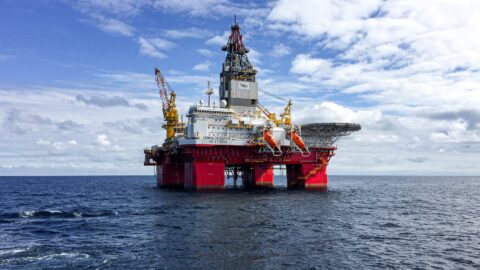The current environment is very positive for the capital markets: strong growth, low inflation, supportive monetary policies, good earnings growth, and low volatilities, i.e. fluctuations. Also, the numerous risks have not had a significantly negative impact on prices. However, the phase of rising prices started as early as March 2009. This environment implies that any change in the relevant parameters such as growth, inflation, and monetary policy would be tantamount to deterioration, given that improvement is not possible anymore. The most important question asked by investors at the outset of 2018 is therefore whether this positive environment is still here to stay.
10 Theses for 2018
- Global growth will peak this year
- The currently low inflation will rise in some important countries
- The extremely low monetary policies will be tightened cautiously
- The weakening credit growth in China will weigh on economic growth
- The fiscal policies will generally be neutral for growth
- On a global scale, no external imbalances will emerge
- The depreciation of the trade-weighted US dollar will not continue
- (Geo) Politics will become more relevant for pricing
- Volatility will increase both for economic variables and for asset prices
- The relationship of the various economic variables is still dominated by the existing low level of interest rates
1. Global growth will peak this year.
One effect of the Great Recession was the fact that the output of the global economy fell significantly short of its potential. The output gap was strongly negative. Alongside the ongoing recovery, the output gap has gradually narrowed. Since 2017 real global GDP growth has been strong and broadly based. In addition, the data surprises are positive, i.e. the forecasts for economic growth have constantly been subject to upward revisions. This tendency could continue for a few months, as the leading indicators such as the global purchasing managers index for the manufacturing sector are rising. However, current growth rates are above the long-term expected value, i.e. potential growth. On the upside, this leads to a decrease in unemployment. In other words, the negative output gap is disappearing in many countries. But this also means that more and more countries are hitting their potential output. Since the latter grows at rates below current growth, this puts a brake on growth.
2. The currently low inflation will rise in some important countries.
The longer the current growth rates remain above potential growth and effectuate a decline in the current unemployment rate below the structural unemployment rate, the more likely the underlying inflation will rise. At the moment, this is particularly relevant for the USA, where the unemployment rate has already fallen to 4.1%, with estimates putting the structural unemployment rate at 4.6%. At the same time, structural forces such as digitisation are exerting downward pressure on inflation. The rise in inflation will therefore only be small. In the Eurozone, inflation will remain low.
3. The extremely low monetary policies will be tightened cautiously,
given that growth will become gradually more self-supporting, the negative output gaps are disappearing, the (immediate) risks of deflation have vanished, and the underlying inflation will rise slightly in some countries, especially the USA. Some central banks raised their key-lending rates already last year. In the USA, the Fed has increased the Fed funds rate to currently 1.25 – 1.50%. At least three rate hikes are realistic this year. In the Eurozone, we only expect a rate increase next year. And not only the price of money, i.e. the interest rate, is going up slightly. At the same time, the growth of the central bank money supply will decrease as well. In the USA, the Fed has already started to reduce the central bank balance sheet cautiously. In the Eurozone, too, the European Central Bank has announced halving its bond purchase programme. Along with the Fed and its policy, the Japanese central bank, i.e. the Bank of Japan, will assume a key role this year. An important element of its programme is the fixing of its 10Y government bond at zero percent. This has led to significant capital outflows to the rest of the world and caused yields to fall. In the most likely scenario, there will be no change, since this could cause the yen to depreciate and inflation to rise. But if the Bank of Japan were to increase the 10Y yield slightly, the global yield level would rise slightly.
4. The weakening credit growth in China will weigh on economic growth.
In the developed economies, low credit growth – and in some countries, the shrinking credit volume outstanding – was depressing economic growth for years. This phase has come to an end. In the emerging economies except China we can also see credit growth stabilising after years of weakening. The focus is now on China, where the economic policy is geared towards the reduction of overcapacities and a gradual weakening of credit growth. As a result, interest rates have increased and the regulatory framework of the financial sector was tightened. In line with this situation, real economic growth will be gradually falling. The important thing is for nominal economic growth (i.e. real growth plus inflation) not to weaken excessively. After all, the important ratio is credit volume to GDP. This development will be a millstone for Chinese import demand and commodity prices. Risk: a badly communicated, restrictive measure could set off corrections.
5. The fiscal policies will generally be neutral for growth.
Much like the credit environment, the fiscal policies have not had a restrictive (i.e. growth-dampening) effect for a while. In the USA, the tax cuts will even lift economic growth by a few tenths of a percentage point.
6. On a global scale, no external imbalances will emerge.
The current account deficits in Turkey, South Africa, and the UK remain country-specific risks.
7. The depreciation of the trade-weighted US dollar will not continue (for the time being).
But the dollar has probably peaked at the end of 2016. The combination of a set of interest rate increases and the expansion of the budget deficit is text-book supportive to a currency. The real effective US dollar, i.e. the trade-weighted US dollar adjusted for the differences in unit labour costs, could even appreciate, since the USA inflation is most likely to rise, relatively speaking. This is positive for the external competitiveness of the US trade partners.
8. (Geo) Politics will become more relevant for pricing.
The anti-globalisation tendencies are only at their early stages. A possible trade conflict between the USA and China is the most prominent externality in this context. The international organisations and institutions are being weakened, and this includes the UN, the EU (Brexit), and the Climate Agreement. This year, the NAFTA might even be dissolved. Also, the tensions in the Middle East and North Korea could escalate. There will be important elections in Italy, Brazil, Russia, and Mexico. In Germany, the formation of a new government is turning out to be a long-winded process, and a majority by the Democrats in the House of Representatives after the November elections might trigger impeachment proceedings.
9. Volatility will increase both for economic variables and for asset prices.
The phase of positive growth surprises will be coming to an end, inflation could jump, the central bank measures (rate increases, reduction of liquidity) could be interpreted as dampening for economic growth, restrictive economic policies in China could nurture the fear of a “hard landing”, earnings growth could disappoint, geopolitical measures could escalate, and in connection with this the oil price could rise drastically.
10. The relationship of the various economic variables is still dominated by the existing low level of interest rates.
This means that the key-lending rates could not be cut anymore by several percentage points in the event of a recession. Therefore, the central banks will continue to act cautiously in order not to trigger a recession. A significant increase of key-lending rates would be a political mistake. Here, the focus is largely on the Fed. The investment issue of the search for yield by high levels of liquidity will remain prevalent.
At the beginning of 2018, the environment supports the capital market. However, this is already largely reflected by the elevated valuations (low spreads for credit risk, above-average price/earnings ratios, generally low bond yields). In the course of the year, the environment will probably become a bit choppier, although the general environment remains positive. But there are also numerous killjoys that might potentially rear their head.
Legal note:
Prognoses are no reliable indicator for future performance.
Legal disclaimer
This document is an advertisement. Unless indicated otherwise, source: Erste Asset Management GmbH. The language of communication of the sales offices is German and the languages of communication of the Management Company also include English.
The prospectus for UCITS funds (including any amendments) is prepared and published in accordance with the provisions of the InvFG 2011 as amended. Information for Investors pursuant to § 21 AIFMG is prepared for the alternative investment funds (AIF) administered by Erste Asset Management GmbH pursuant to the provisions of the AIFMG in conjunction with the InvFG 2011.
The currently valid versions of the prospectus, the Information for Investors pursuant to § 21 AIFMG, and the key information document can be found on the website www.erste-am.com under “Mandatory publications” and can be obtained free of charge by interested investors at the offices of the Management Company and at the offices of the depositary bank. The exact date of the most recent publication of the prospectus, the languages in which the fund prospectus or the Information for Investors pursuant to Art 21 AIFMG and the key information document are available, and any other locations where the documents can be obtained are indicated on the website www.erste-am.com. A summary of the investor rights is available in German and English on the website www.erste-am.com/investor-rights and can also be obtained from the Management Company.
The Management Company can decide to suspend the provisions it has taken for the sale of unit certificates in other countries in accordance with the regulatory requirements.
Note: You are about to purchase a product that may be difficult to understand. We recommend that you read the indicated fund documents before making an investment decision. In addition to the locations listed above, you can obtain these documents free of charge at the offices of the referring Sparkassen bank and the offices of Erste Bank der oesterreichischen Sparkassen AG. You can also access these documents electronically at www.erste-am.com.
Our analyses and conclusions are general in nature and do not take into account the individual characteristics of our investors in terms of earnings, taxation, experience and knowledge, investment objective, financial position, capacity for loss, and risk tolerance. Past performance is not a reliable indicator of the future performance of a fund.
Please note: Investments in securities entail risks in addition to the opportunities presented here. The value of units and their earnings can rise and fall. Changes in exchange rates can also have a positive or negative effect on the value of an investment. For this reason, you may receive less than your originally invested amount when you redeem your units. Persons who are interested in purchasing units in investment funds are advised to read the current fund prospectus(es) and the Information for Investors pursuant to § 21 AIFMG, especially the risk notices they contain, before making an investment decision. If the fund currency is different than the investor’s home currency, changes in the relevant exchange rate can positively or negatively influence the value of the investment and the amount of the costs associated with the fund in the home currency.
We are not permitted to directly or indirectly offer, sell, transfer, or deliver this financial product to natural or legal persons whose place of residence or domicile is located in a country where this is legally prohibited. In this case, we may not provide any product information, either.
Please consult the corresponding information in the fund prospectus and the Information for Investors pursuant to § 21 AIFMG for restrictions on the sale of the fund to American or Russian citizens.
It is expressly noted that this communication does not provide any investment recommendations, but only expresses our current market assessment. Thus, this communication is not a substitute for investment advice.
This document does not represent a sales activity of the Management Company and therefore may not be construed as an offer for the purchase or sale of financial or investment instruments.
Erste Asset Management GmbH is affiliated with the Erste Bank and austrian Sparkassen banks.
Please also read the “Information about us and our securities services” published by your bank.



